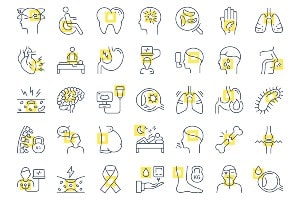About Breathing Tube (Endotracheal Intubation)

Learn about the disease, illness and/or condition Breathing Tube (Endotracheal Intubation) including: symptoms, causes, treatments, contraindications and conditions at ClusterMed.info.
Breathing Tube (Endotracheal Intubation)

| Breathing Tube (Endotracheal Intubation) |
|---|
Breathing Tube (Endotracheal Intubation) InformationHow do they put the tube down into the trachea?The doctor often inserts the tube with the help of a laryngoscope, an instrument that permits the doctor to see the upper portion of the trachea, just below the vocal cords. During the procedure the laryngoscope is used to hold the tongue aside while inserting the tube into the trachea. It is important that the head be positioned in the appropriate manner to allow for proper visualization. Pressure is often applied to the thyroid cartilage (Adam's apple) to help with visualization and prevent possible aspiration of stomach contents. What are the complications of endotracheal intubation?If the tube is inadvertently placed in the esophagus (right behind the trachea), adequate respirations will not occur. Brain damage, cardiac arrest, and death can occur. Aspiration of stomach contents can result in pneumonia and ARDS. Placement of the tube too deep can result in only one lung being ventilated and can result in a pneumothorax as well as inadequate ventilation. During endotracheal tube placement, damage can also occur to the teeth, the soft tissues in the back of the throat, as well as the vocal cords. This procedure should be performed by a physician with experience in intubation. In the vast majority of cases of intubation, no significant complications occur. What is endotracheal intubation?Endotracheal intubation is a procedure by which a tube is inserted through the mouth down into the trachea (the large airway from the mouth to the lungs). Before surgery, this is often done under deep sedation. In emergency situations, the patient is often unconscious at the time of this procedure. What is the purpose of endotracheal intubation?The endotracheal tube serves as an open passage through the upper airway. The purpose of endotracheal intubation is to permit air to pass freely to and from the lungs in order to ventilate the lungs. Endotracheal tubes can be connected to ventilator machines to provide artificial respiration. This can help when a patient is unconscious and by maintaining a patent airway, especially during surgery. It is often used when patients are critically ill and cannot maintain adequate respiratory function to meet their needs. The endotracheal tube facilitates the use of a mechanical ventilator in these critical situations. What kind of tube is used?The tube that is used today is usually a flexible plastic tube. It is called an endotracheal tube because it is slipped within the trachea. |
More Diseases
A | B | C | D | E | F | G | H | I | J | K | L | M | N | O | P | Q | R | S | T | U | V | W | X | Y | Z
Diseases & Illnesses Definitions Of The Day
- Noncancerous Colloid Thyroid Nodule (Thyroid Nodules) ‐ How are thyroid nodules diagnosed?, Introduction to thyroid nodules …
- Skin, Laser Resurfacing (Laser Resurfacing) ‐ CO2 Laser Resurfacing, Complications of Laser Skin Resurfacing …
- Malignant Fibrous Histiocytoma (Bone Cancer Overview) ‐ Are there any treatments or medications that relieve bone cancer pain? …
- Double Vision ‐ Is it possible to prevent double vision?, What are the symptoms and signs of double vision? …
- Ageusia (Taste Disorders) ‐ Are taste disorders serious?, Can taste disorders be treated? …
- Autism Screening and Diagnosis ‐
- Alpha-fetoprotein Blood Test ‐ In which situations are high blood (serum) levels of AFP used as a tumor marker? …
- Polymyalgia Rheumatica ‐ How do health care professionals make a diagnosis of polymyalgia rheumatica? …
- Stump Appendicitis (Appendicitis) ‐ Appendicitis definition and facts, Are there long-term consequences of appendectomy? …
- Gonorrhea (Gonorrhea In Women) ‐ Gonorrhea facts, How is gonorrhea diagnosed?, What are sexually transmitted diseases (STDs)? …